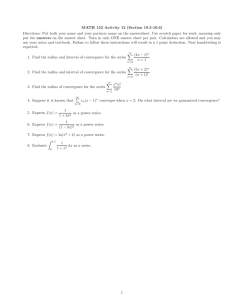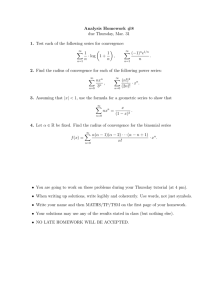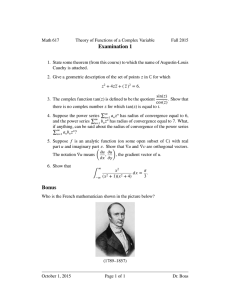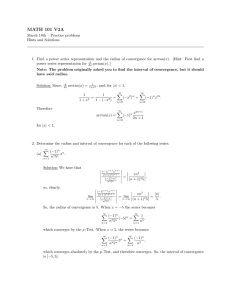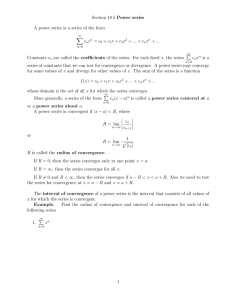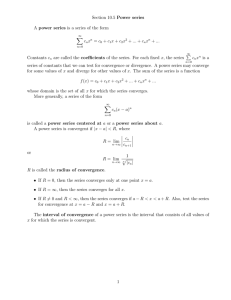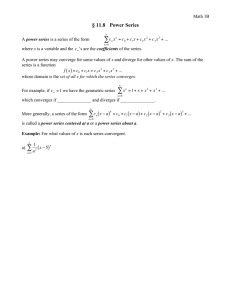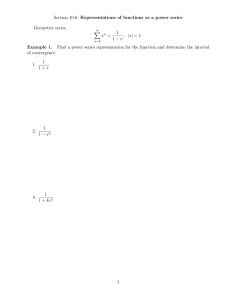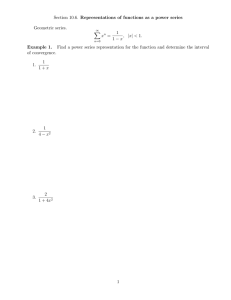1 10.6: Functions as Power Series
advertisement
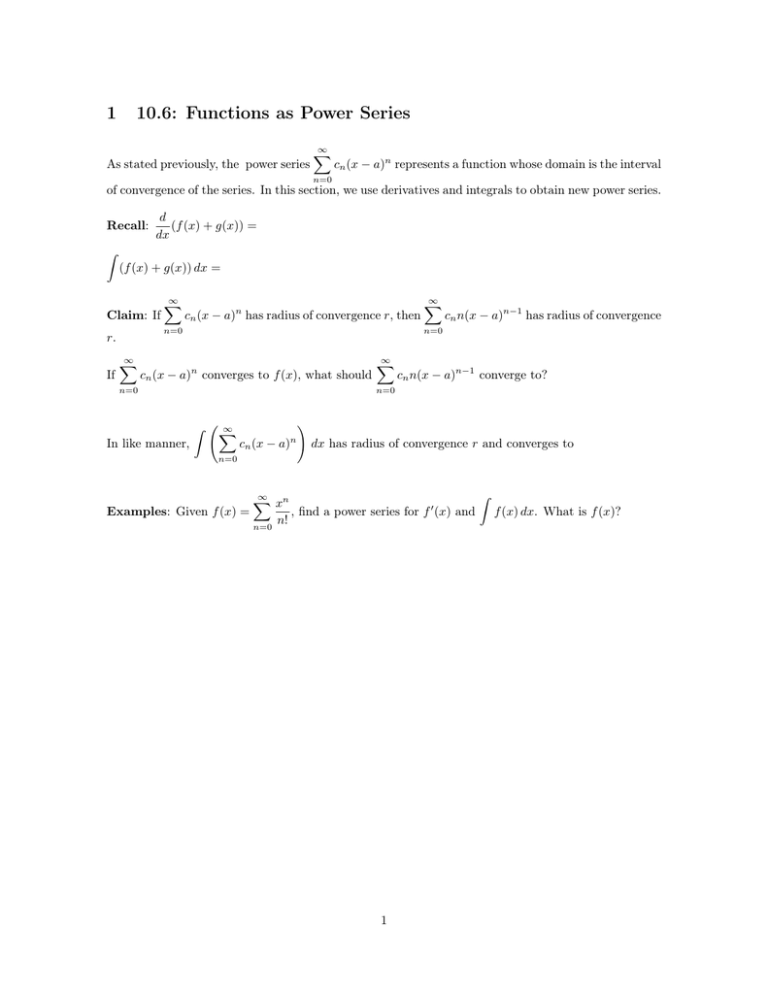
1 10.6: Functions as Power Series As stated previously, the power series ∞ X cn (x − a)n represents a function whose domain is the interval n=0 of convergence of the series. In this section, we use derivatives and integrals to obtain new power series. Recall: d (f (x) + g(x)) = dx ˆ (f (x) + g(x)) dx = Claim: If cn (x − a)n has radius of convergence r, then n=0 r. If ∞ X ∞ X cn n(x − a)n−1 has radius of convergence n=0 cn (x − a)n converges to f (x), what should n=0 ∞ X cn n(x − a)n−1 converge to? n=0 ˆ In like manner, ∞ X ∞ X ! cn (x − a)n dx has radius of convergence r and converges to n=0 Examples: Given f (x) = ˆ ∞ X xn , find a power series for f 0 (x) and f (x) dx. What is f (x)? n! n=0 1 Find a power series for f (x) = 1 and use it to determine a power series for f (x) = arctan x. 1 + x2 . Find the radius and interval of convergence of the series. π Choosing an appropriate value of x, how many terms of the series are needed to approximate to 4 within 0.001? 2 On Beyond Average: Find the sum of ∞ X nxn . n=0 If g(x) = (−1)n n 1 2 1 3 1 4 x − x + x − ··· + x + · · · , find g 0 2 3 4 n 3 1 2
